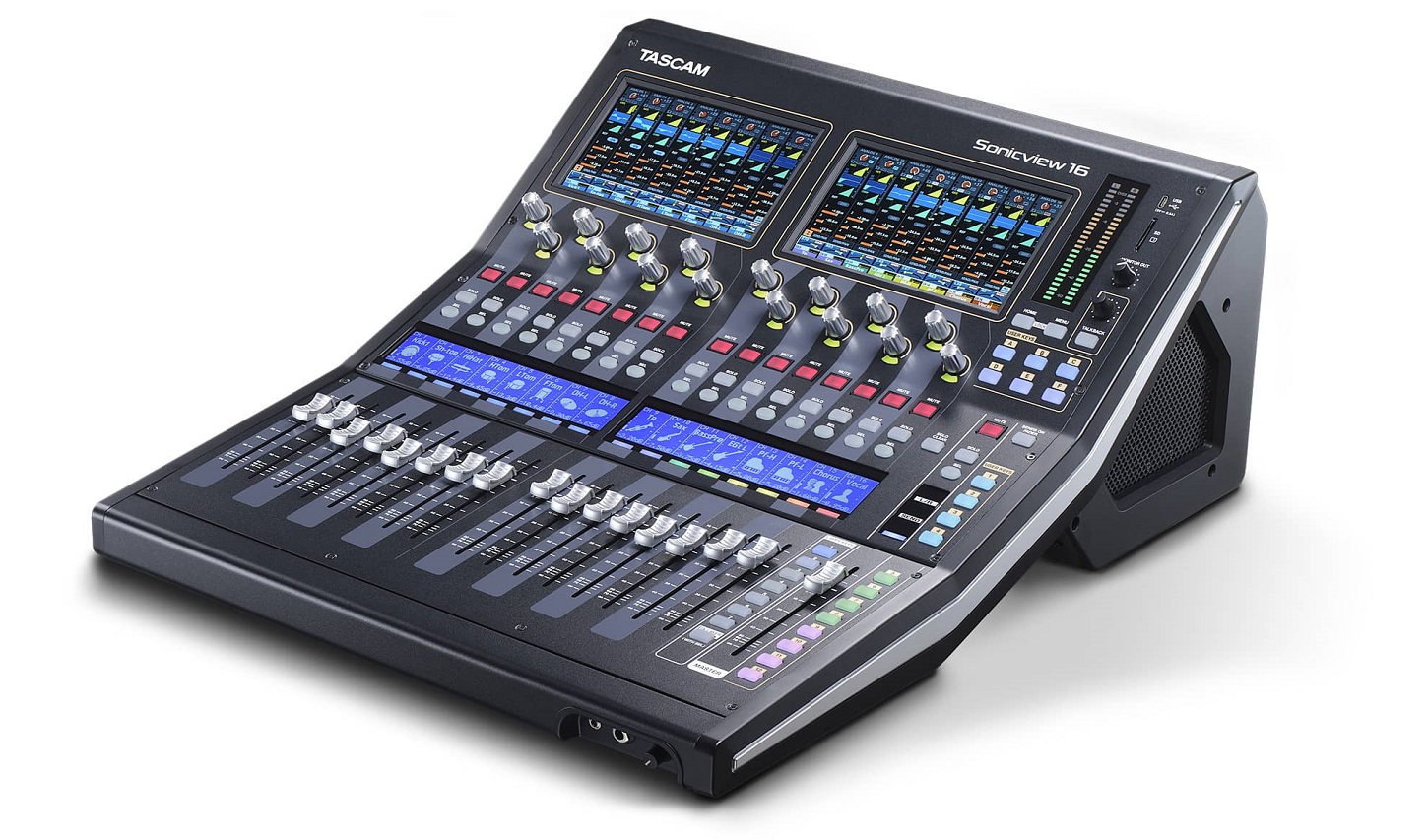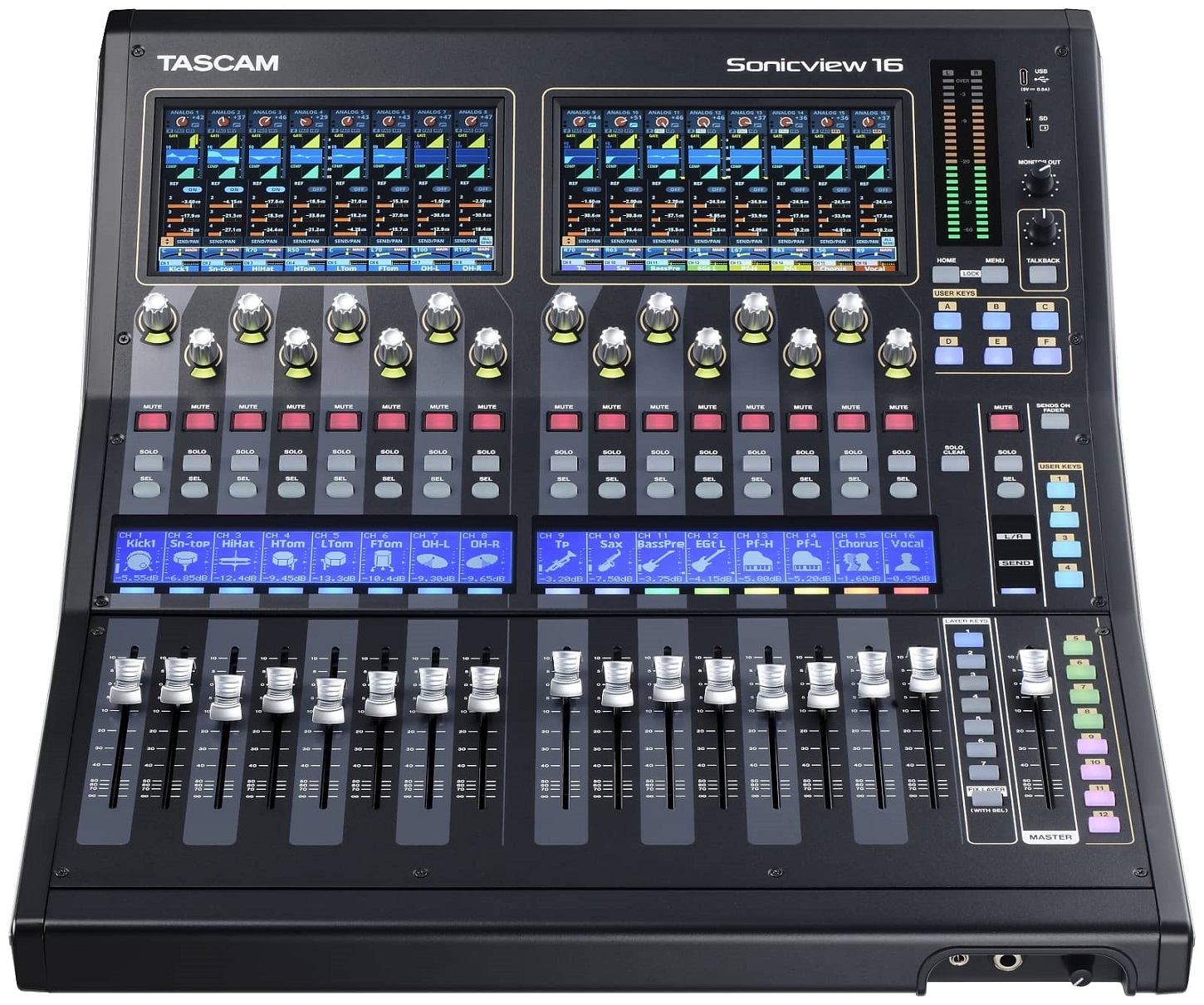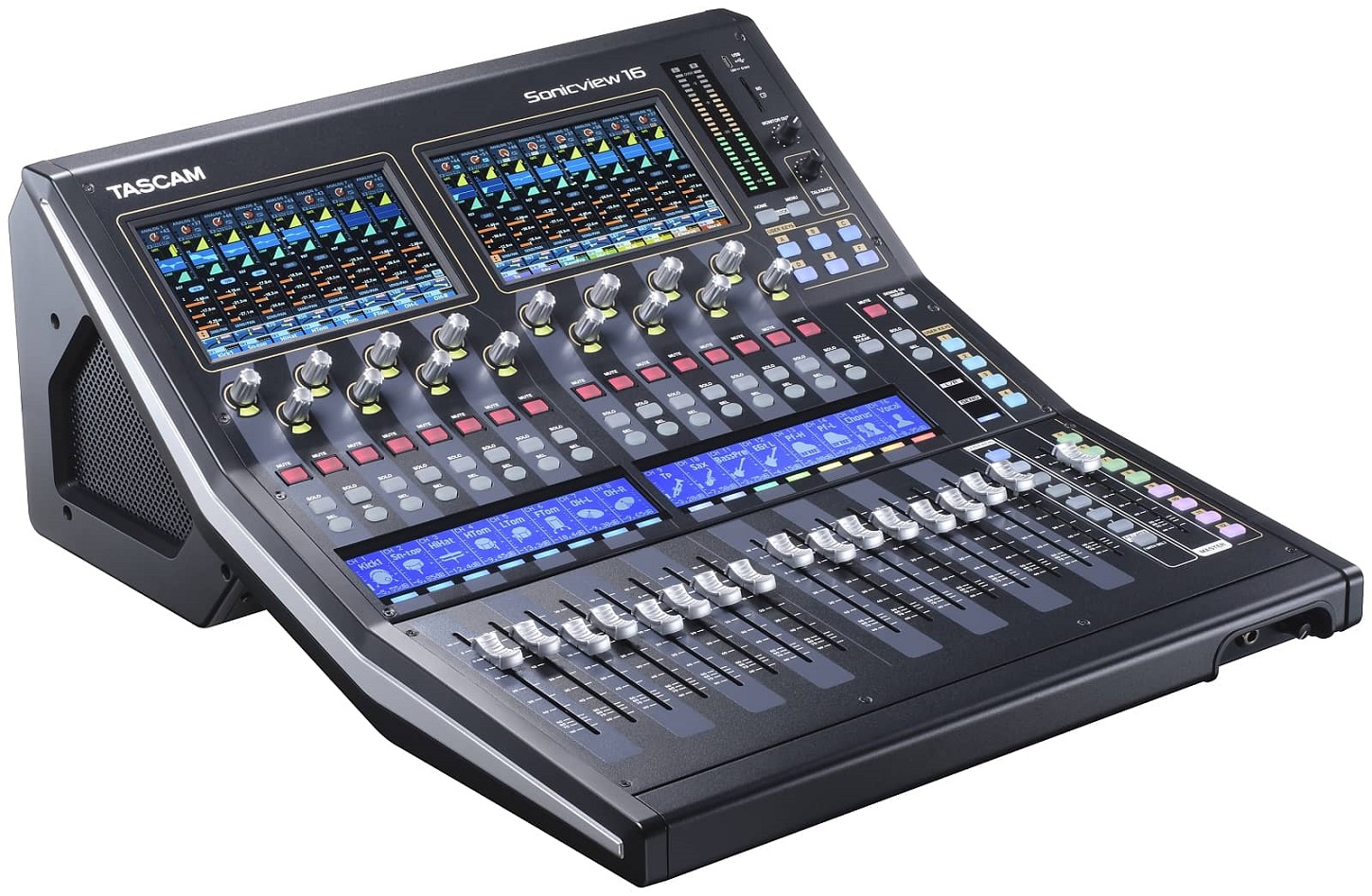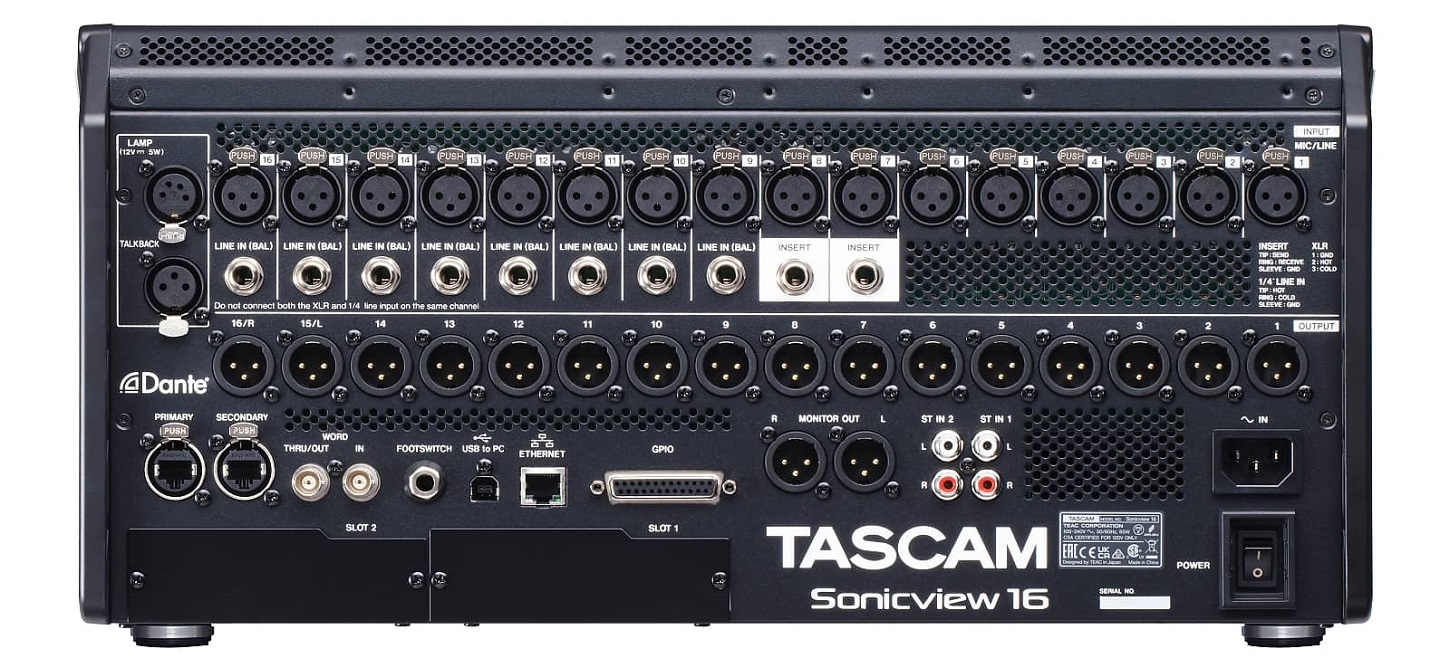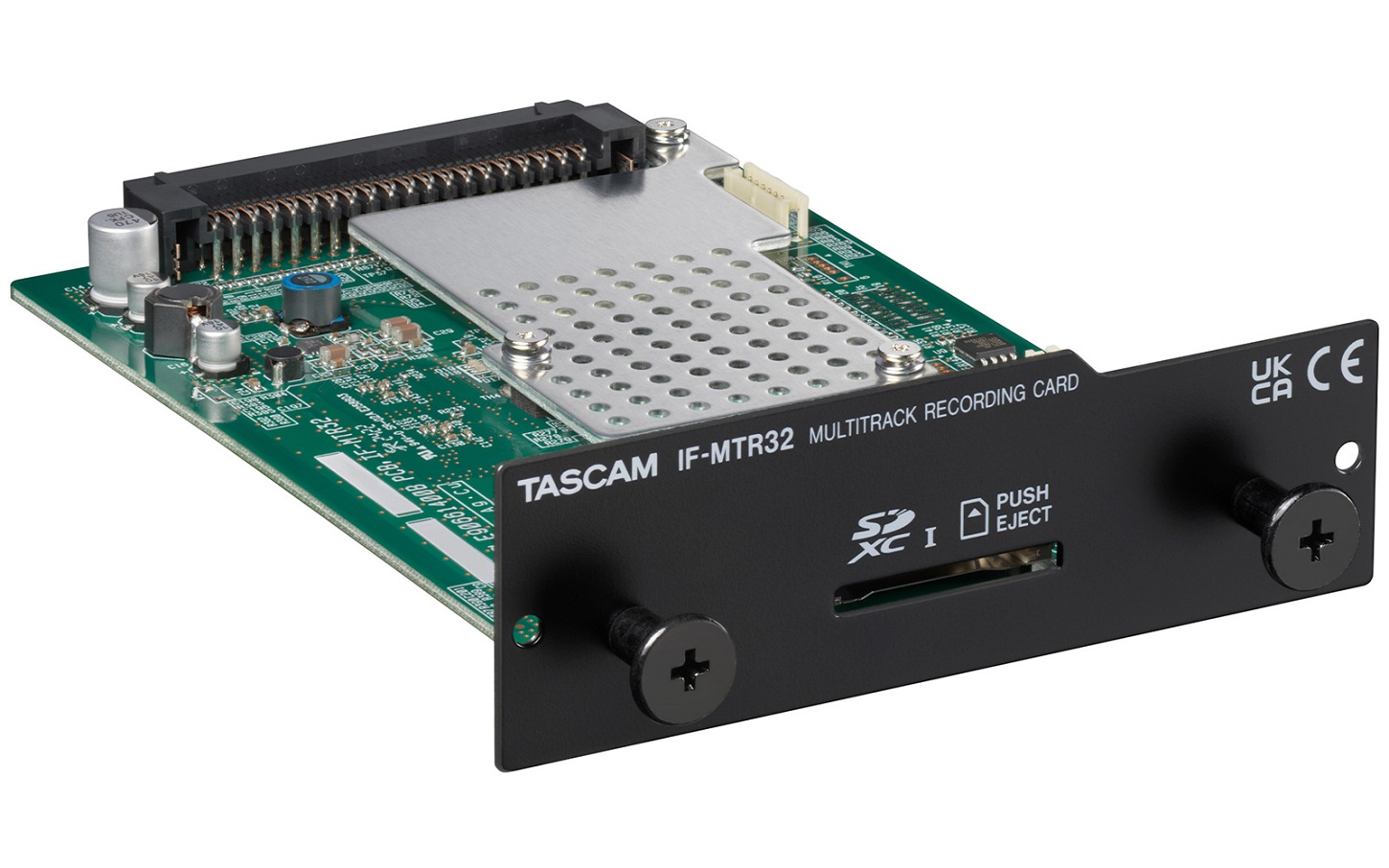- Soft & Hardware
- Studio Gear
- Audio Systems
-
DJ Products
Categories
- Lights & FX
- Video
-
Consumer AV
Categories
- Accessories
- Computers
- Special Offers
Code: 6459
Pre-Order
Enquire to be notified upon availability

The New Way of Mixing
Surprisingly Intuitive and Easy
Tascam has a long history of high-quality recording products and digital mixers, culminating in the legendary DA-88 eight-track modular multi-track recorder and the DM-4800 digital mixer, a workhorse combination that once set a new standard. With Sonicview, Tascam has created an entirely new line of digital mixing consoles that incorporate the latest technology and make it easy to view and control all of the parameters you want, when you want, with fullyly customisable touchscreens and user-definable buttons, motorised faders and intuitive control software.
Sonicview recording consoles integrate beautifully with the rest of your system, thanks to built-in Dante networking, a 32-bit/96-kHz multi-channel USB audio interface and plenty of inputs and outputs. No-compromise audio quality and a 54-bit floating-point FPGA mixing engine combines with ample signal processing, an expansion slot for additional connectivity and wireless remote control to make Sonicview mixers the next-generation choice for recording studios, remote recording, touring, installed sound and broadcasting.
Other Features:

